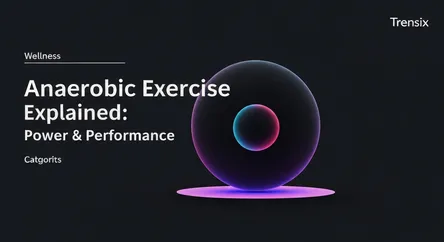Wellness
Anaerobic Exercise Explained: Power & Performance

Discover what anaerobic exercise is, with examples like HIIT and weightlifting, and how these powerful, short bursts of activity can boost your fitness.
What is it?
Anaerobic exercise is any physical activity that breaks down glucose for energy without using oxygen. The term "anaerobic" literally means "without oxygen." These exercises involve short, intense bursts of effort where the body's demand for oxygen exceeds the supply available. Because of this, the body relies on energy stored within the muscles. Common examples include high-intensity interval training (HIIT), sprinting, weightlifting, and plyometrics like jump squats. This process produces energy quickly but also leads to the buildup of lactic acid, causing muscle fatigue.
Why is it trending?
Anaerobic exercise is popular because it delivers significant fitness gains in a short amount of time. Workouts like HIIT can offer health benefits similar to twice as much moderate-intensity exercise. It is highly effective for building and maintaining lean muscle mass, which in turn boosts metabolism, helping to burn more calories even after the workout is over. Furthermore, it increases bone strength and density, reducing the risk of osteoporosis. Many people incorporate it into their routines to improve their power, speed, and athletic ability.
How does it affect people?
Regularly performing anaerobic exercise can lead to significant improvements in overall health and fitness. It increases a person's lactic threshold, meaning they can work out harder for longer before feeling fatigue. By building muscle strength, it helps protect joints from injury. Consistent training enhances the body's ability to store glycogen, which provides more energy for future physical activities. It also has positive effects on cardiovascular health, can reduce the risk of diseases like diabetes, and may help fight depression.